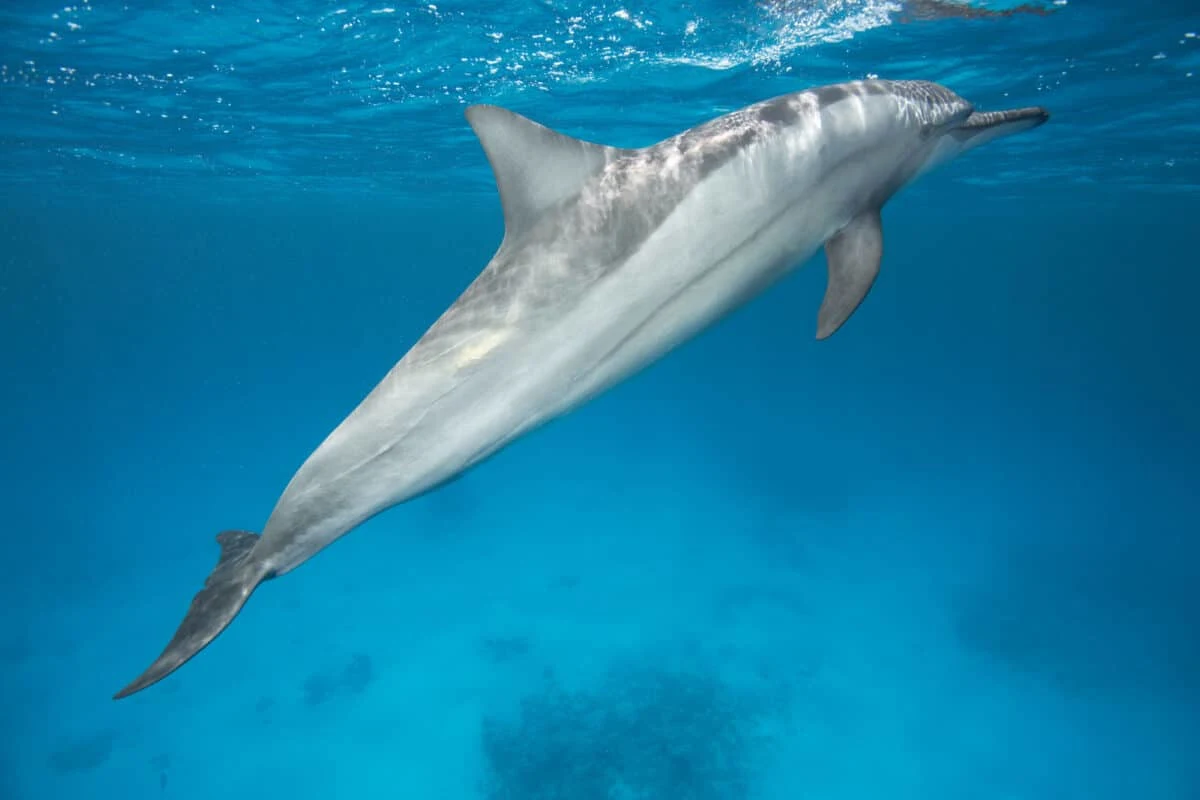Hawaii’s unique geographical isolation has created a paradise not just for tourists, but for a diverse array of wildlife found nowhere else on Earth. As one of the most remote archipelagos in the world, Hawaii hosts an incredible collection of endemic species that have evolved in splendid isolation over millions of years. From the depths of its crystal-clear waters to the heights of its volcanic mountains, the Hawaiian Islands are home to fascinating creatures that showcase nature’s ingenuity and resilience. Whether you’re planning a Hawaiian vacation or simply curious about the biodiversity of this Pacific paradise, discovering these 17 amazing animals will deepen your appreciation for Hawaii’s natural heritage and the conservation efforts working to protect them.
14. Hawaiian Monk Seal (Neomonachus schauinslandi)
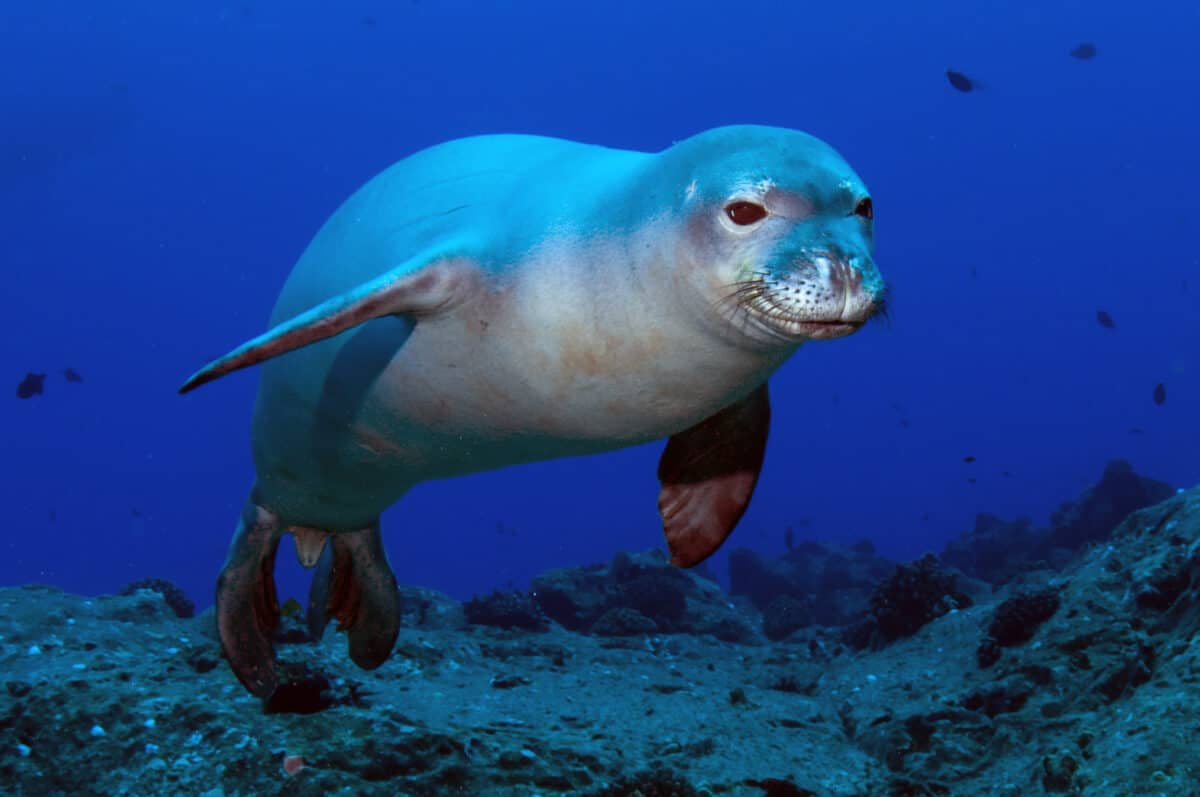
The Hawaiian Monk Seal, known locally as “Ilio-holo-i-ka-uaua” (dog running in rough water), is one of the most endangered marine mammals in the world. With only about 1,400 individuals remaining, these charismatic pinnipeds are endemic to Hawaii and can occasionally be spotted resting on beaches across the islands. Adult monk seals typically grow to 7-8 feet in length and weigh between 400-600 pounds, with females slightly larger than males.
Conservation efforts have been intensified in recent decades as the population continues to face threats from habitat loss, limited food availability, and human disturbance. These solitary animals feed primarily on fish, squid, and crustaceans found in the deeper waters surrounding the islands. If you’re lucky enough to spot a monk seal on your Hawaiian adventure, remember to maintain a respectful distance of at least 150 feet and never approach or disturb these protected creatures.
13. Green Sea Turtle (Chelonia mydas)

Known as “Honu” in Hawaiian, the green sea turtle holds a special place in Hawaiian culture as a symbol of good luck, endurance, and long life. Despite their name, green sea turtles aren’t actually green on the outside; they get their name from the greenish color of their fat, which comes from their primarily herbivorous diet of seagrasses and algae. Adults can weigh up to 400 pounds and measure 3-4 feet in shell length, with lifespans that can exceed 70 years.
Hawaiian green sea turtles can frequently be seen feeding in shallow waters or basking on beaches, particularly on the North Shore of Oahu and at Punalu’u Black Sand Beach on the Big Island. While their population has increased thanks to protection under the Endangered Species Act, they still face threats from habitat degradation, climate change, and fishing gear entanglement. Visitors should remember that touching or disturbing these ancient mariners is illegal and harmful to their well-being.
12. Humpback Whale (Megaptera novaeangliae)

Each winter, approximately 10,000 humpback whales journey from Alaska to Hawaii’s warm waters to breed, give birth, and nurse their calves. These magnificent marine mammals, known as “Kohola” in Hawaiian, typically arrive in November and stay until May, with peak viewing season from January to March. Adult humpbacks can reach lengths of 40-50 feet and weigh up to 40 tons, making them one of the largest animals you can reliably see in Hawaii.
Whale watching has become a popular activity across the Hawaiian Islands, with Maui’s Au’au Channel offering some of the best opportunities to witness their spectacular behaviors including breaching, tail slapping, and singing. The male humpbacks’ complex songs can travel for miles underwater and last up to 20 minutes. Hawaii’s humpback population represents a conservation success story, having rebounded significantly since receiving protection in the 1970s, though they still face challenges from ocean noise, ship strikes, and climate change.
11. Hawaiian Hawk (Buteo solitarius)
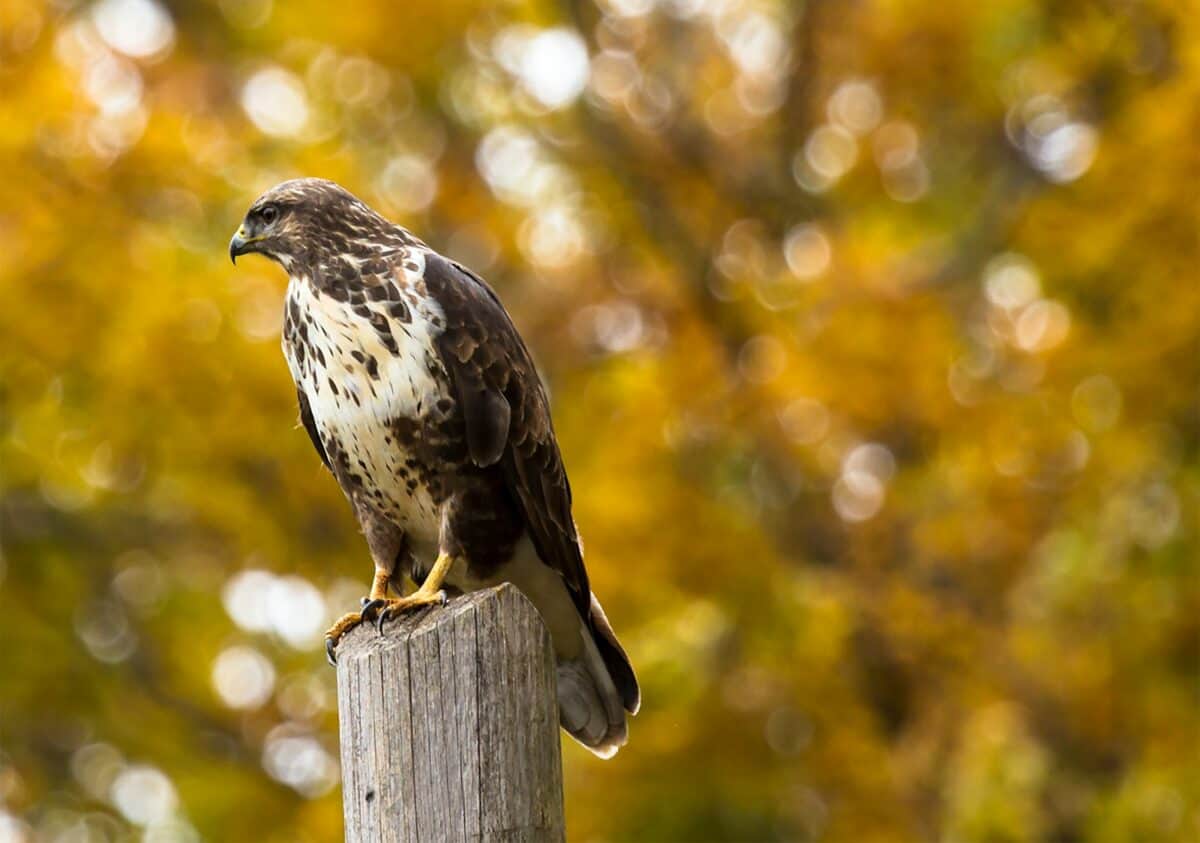
The Hawaiian Hawk, or ‘Io, is a powerful raptor endemic to the Big Island of Hawaii and holds significant cultural importance as a manifestation of ancestral guardian spirits in Hawaiian tradition. Once endangered, conservation efforts have helped this majestic bird recover to the point where it was removed from the endangered species list in 2020. The ‘Io exhibits an unusual color polymorphism, with both dark and light morphs existing in the population regardless of age or gender.
These adaptable hunters prey on small mammals, birds, and insects, and can be spotted soaring above forests and open areas on the Big Island. With a wingspan of about 3 feet, they’re relatively small compared to mainland hawks but are fierce predators in the Hawaiian ecosystem. The Hawaiian Hawk’s recovery represents a rare success story in Hawaiian conservation, though habitat preservation remains crucial for their continued survival as they’re still absent from all other Hawaiian islands despite historical evidence suggesting they once had a wider range.
10. Hawaiian Monk Seal (Monachus schauinslandi)
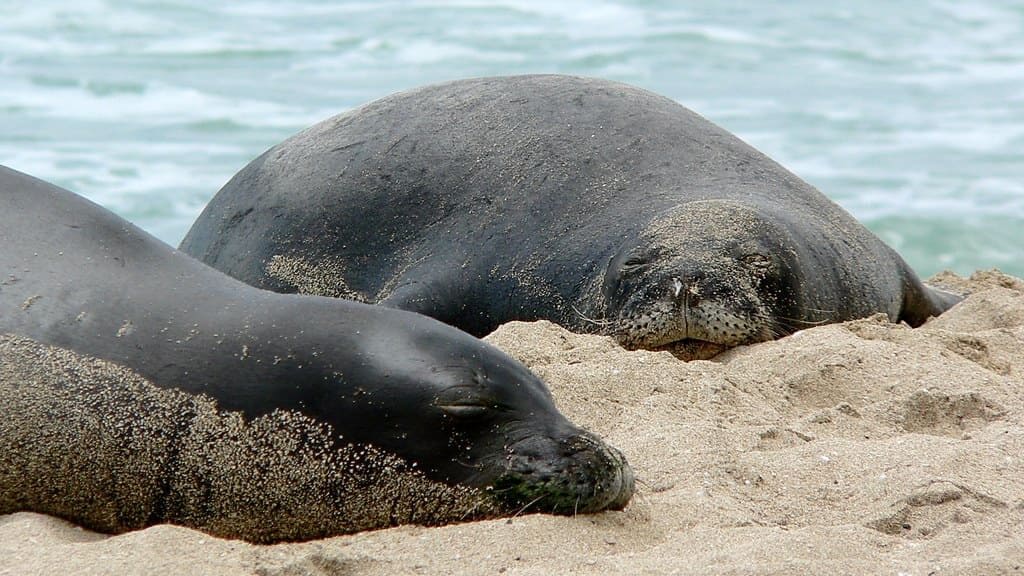
The Hawaiian Hoary Bat, or ‘Ōpe’ape’a, is Hawaii’s only native land mammal, having arrived on the islands approximately 10,000 years ago. Named for the frosted or “hoary” appearance of its fur, this endangered species is smaller than its mainland relatives, with a wingspan of about 10-13 inches. As nocturnal creatures, these agile flyers emerge at dusk to hunt insects, using echolocation to navigate and locate prey in the darkness.
While elusive, lucky visitors might spot Hawaiian hoary bats at twilight near forest edges, particularly on the Big Island, Kauai, and Maui. These solitary animals roost in trees during the day, preferring the shelter of native forests. Conservation efforts focus on protecting their forest habitat and addressing threats from wind energy development, which can pose collision risks. The Hawaiian name ‘Ōpe’ape’a refers to the bat’s wing shape, which resembles the sail of a canoe when extended.
9. Nene Goose (Branta sandvicensis)
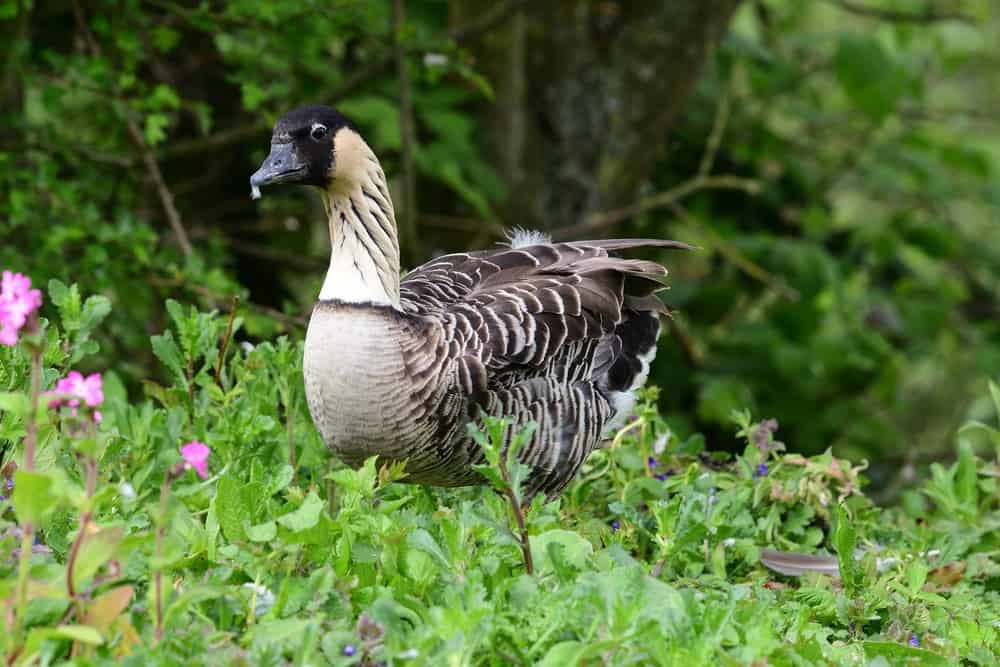
The Nene, or Hawaiian Goose, is Hawaii’s state bird and a remarkable example of evolutionary adaptation. Descended from Canada Geese that arrived in Hawaii around 500,000 years ago, the Nene has evolved reduced webbing between its toes to better navigate the rough volcanic terrain. These medium-sized geese stand about 2 feet tall and showcase distinctive buff cheeks and black-striped necks. Once abundant across the islands, hunting and introduced predators drove them to near extinction, with only 30 birds remaining by 1952.
Today, intensive conservation efforts have increased their population to over 3,000 individuals, primarily on the islands of Hawaii, Maui, and Kauai. Visitors can spot these iconic birds in Hawaii Volcanoes National Park, Haleakalā National Park, and at wildlife sanctuaries across the islands. Despite their recovery, the Nene remains vulnerable to threats from non-native predators, habitat loss, and vehicle collisions. When encountering these special birds, maintain a respectful distance and never feed them, as human food can be harmful and create dangerous dependencies.
8. Hawaiian Happy Face Spider (Theridion grallator)

The Hawaiian Happy Face Spider, scientifically known as Theridion grallator, is one of Hawaii’s most whimsical endemic creatures. This tiny arachnid, measuring only about 5mm across, gets its name from the distinctive pattern on its abdomen that remarkably resembles a smiling face. Found primarily in the native rainforests of Oahu, Maui, Molokai, and the Big Island, these spiders display an astonishing variety of color morphs, with the yellow “happy face” variant being the most recognized.
These diminutive spiders create their webs on the undersides of leaves, particularly those of the native Ohia lehua tree, where they hunt small insects. What makes them particularly fascinating to scientists is their remarkable genetic polymorphism, with over 20 different color patterns identified in populations. While they’re difficult to spot due to their small size and preference for forest canopies, patient wildlife enthusiasts with a keen eye might glimpse these charming spiders during guided rainforest hikes. Despite their endearing appearance, the Happy Face Spider faces threats from habitat loss and invasive species.
7. Manta Ray (Manta alfredi)

The majestic Manta Ray, locally known as “Hahalua,” provides one of Hawaii’s most memorable wildlife encounters. These gentle giants can reach wingspans of up to 18 feet, though the Hawaiian population typically averages 12 feet across. Unlike stingrays, mantas have no stinging barb and are completely harmless to humans. They’re filter feeders that consume large quantities of zooplankton, which they sweep into their mouths using specialized gill plates called cephalic lobes.
The Kona coast of the Big Island offers world-renowned opportunities to observe manta rays during night dives and snorkeling excursions. Here, specially placed lights attract plankton, which in turn draws the mantas to perform balletic feeding loops just feet away from awestruck visitors. Each manta has a unique pattern of spots on its underside, allowing researchers to identify and track individuals over time. Some resident mantas have been documented in Hawaiian waters for over 40 years. Though not currently endangered, manta rays face threats from fishing pressure in other parts of their range and are protected in Hawaiian waters.
6. Hawaiian Monk Seal (Carcharhinus galapagensis)
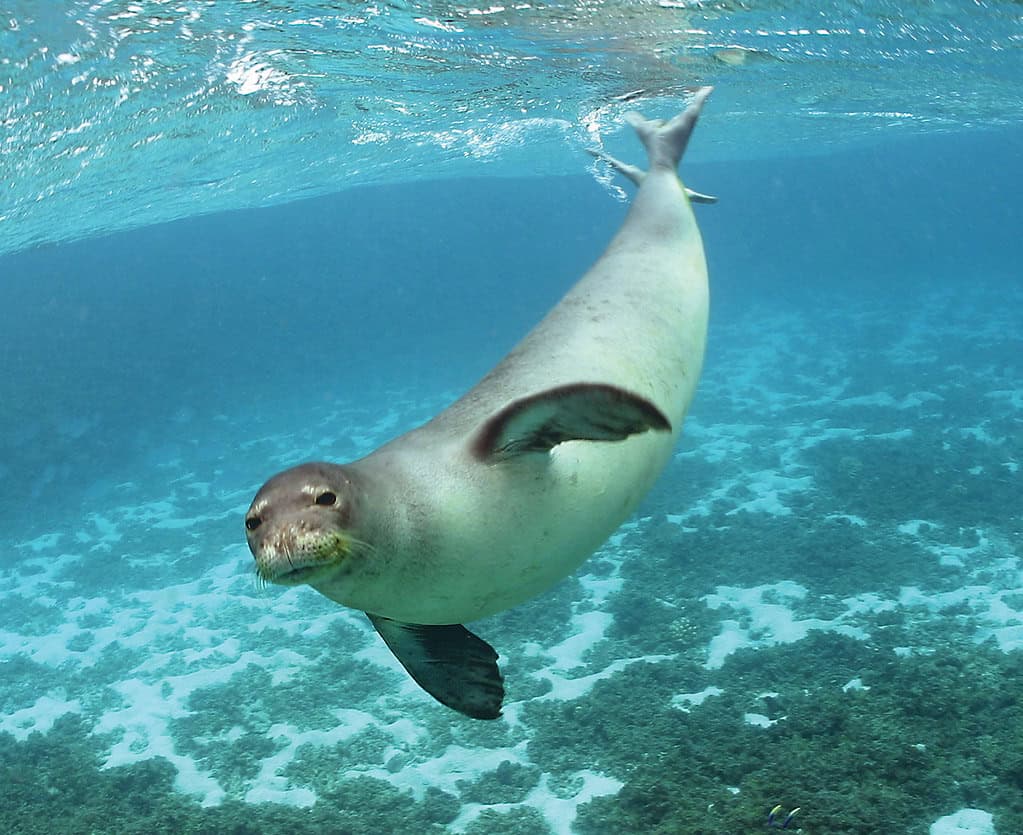
The Galapagos Shark, despite its name, is one of the most commonly encountered shark species in Hawaiian waters. Growing to lengths of 10-12 feet, these powerful predators are recognized by their brownish-gray coloration, rounded snout, and relatively stocky build. They’re most frequently spotted around offshore islets and seamounts, though they occasionally venture closer to shore, particularly around the Northwestern Hawaiian Islands.
While generally not considered dangerous to humans, Galapagos Sharks can be curious and assertive, especially in areas where they’ve been inadvertently conditioned through activities like spearfishing. Divers may encounter these impressive sharks at sites like Moku Ho’oniki off Molokai and around Molokini Crater near Maui. These apex predators play a crucial role in maintaining healthy marine ecosystems by regulating prey populations. Like many shark species worldwide, they face pressures from fishing, particularly the destructive practice of shark finning, though Hawaii has been a leader in enacting strong protections for its shark populations.
5. Hawaiian Bobtail Squid (Euprymna scolopes)
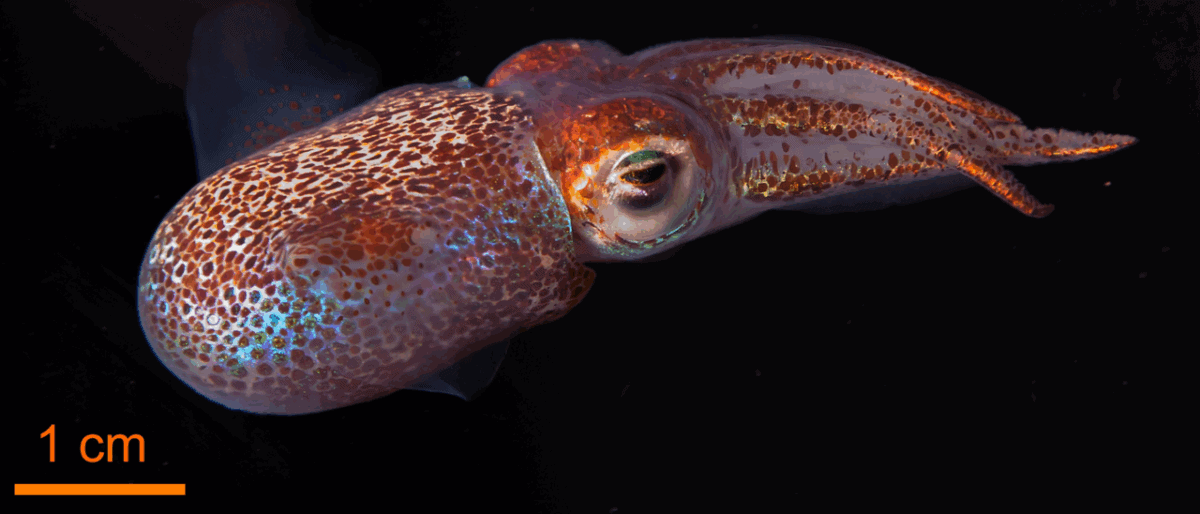
The Hawaiian Bobtail Squid may be small—growing to only about 2 inches in length—but it’s one of the most fascinating creatures in Hawaii’s coastal waters. This diminutive cephalopod is famous for its remarkable bioluminescent partnership with light-producing bacteria (Vibrio fischeri), which it cultivates in a special light organ. This symbiotic relationship allows the squid to eliminate its shadow on moonlit nights by matching the intensity of downwelling light, effectively becoming invisible to predators swimming below—a phenomenon known as counter-illumination.
Active primarily at night, these nocturnal hunters bury themselves in sandy bottoms during daylight hours with only their eyes exposed. They can be found in shallow waters around all the main Hawaiian islands, particularly in sandy areas near reef systems. The Hawaiian Bobtail Squid has become an important model organism for studying symbiotic relationships in marine biology. Night snorkelers with underwater lights might spot these magical creatures hunting small fish and crustaceans, their bodies glowing with an ethereal blue light that seems almost otherworldly.
4. Day Octopus (Octopus cyanea)
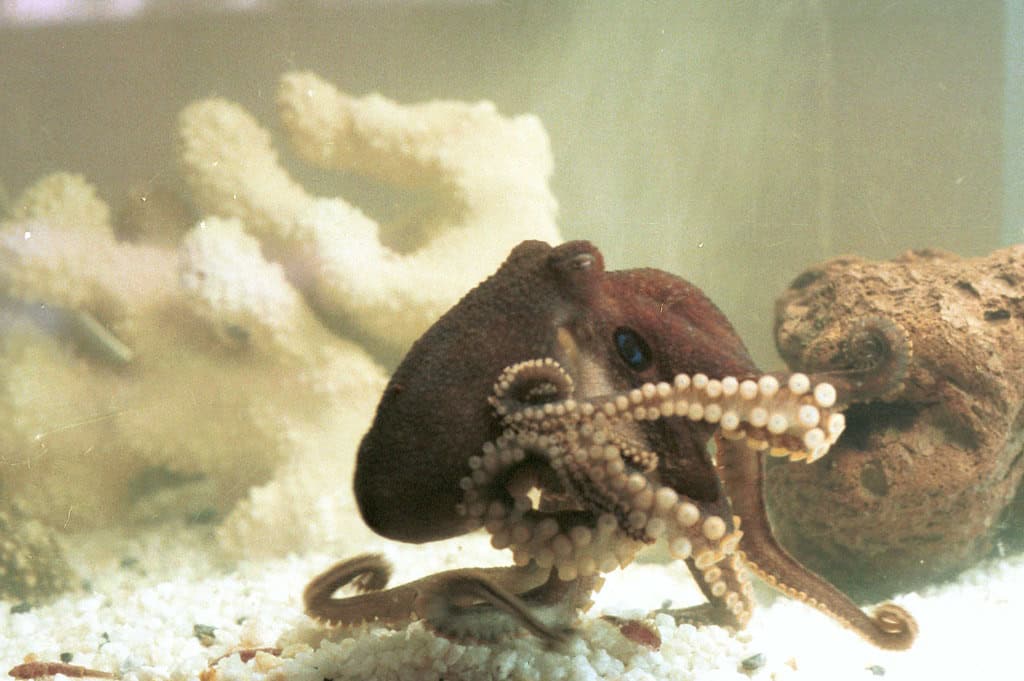
The Day Octopus, or “He’e” in Hawaiian, is one of the most intelligent creatures you can encounter in Hawaii’s waters. Unlike many octopus species that are strictly nocturnal, the Day Octopus is active during daylight hours, making it more visible to snorkelers and divers. These remarkable cephalopods can grow to have an arm span of up to 3 feet and possess the extraordinary ability to change both color and texture almost instantaneously, allowing them to blend seamlessly with coral, rock, or sand backgrounds.
Found in shallow reef environments throughout the Hawaiian Islands, these master hunters use their keen intelligence to solve complex problems, squeeze through incredibly tight spaces (limited only by the size of their beak), and employ sophisticated hunting strategies. They’re relatively short-lived, with a lifespan of only 12-15 months, but in that time display remarkable learning abilities and individual personalities. When observing these fascinating creatures, remember to practice responsible wildlife viewing—never touch or harass them, as this can cause significant stress to these sensitive animals.
3. ‘I’iwi (Drepanis coccinea)
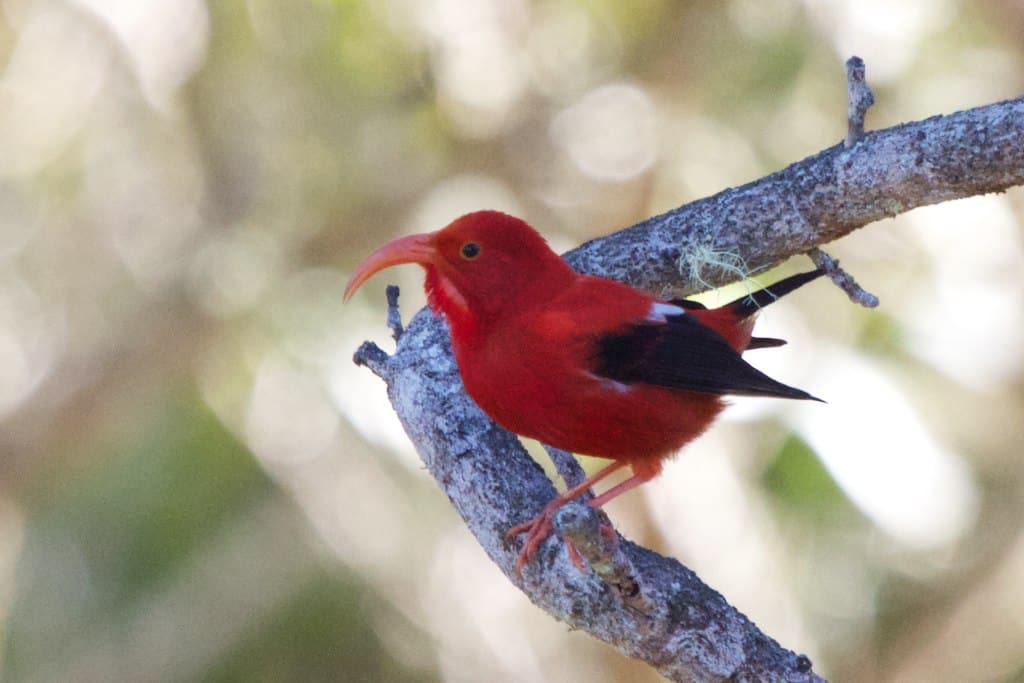
The ‘I’iwi, or Scarlet Honeycreeper, is one of Hawaii’s most iconic native forest birds, instantly recognizable by its brilliant scarlet plumage, black wings, and distinctive curved salmon-colored bill. Once abundant throughout Hawaiian forests, these spectacular birds have suffered dramatic population declines and are now primarily found in high-elevation forests above 4,500 feet, particularly on the Big Island and Maui. Their long, curved bills evolved specifically to access nectar from the tubular flowers of native lobelioid plants, demonstrating a classic example of co-evolution.
Beyond their striking appearance, ‘I’iwi are known for their beautiful calls that once filled Hawaiian forests—a complex repertoire that includes flute-like whistles and squeaks that earned them the nickname “Hawaiian clarinet.” Bird enthusiasts might spot these crimson beauties in places like Hakalau Forest National Wildlife Refuge on the Big Island or Hosmer Grove in Haleakalā National Park on Maui. The ‘I’iwi faces severe threats from avian malaria spread by introduced mosquitoes, making high-elevation forests their last refuge as these areas are currently too cool for mosquitoes to thrive—though climate change threatens even these sanctuaries.
2. Spinner Dolphin (Stenella longirostris)

The Spinner Dolphin, or “Nai’a” in Hawaiian, offers one of Hawaii’s most enchanting wildlife experiences. These acrobatic cetaceans are named for their signature move—leaping high out of the water and spinning up to seven times before splashing back into the sea. Growing to lengths of 5-7 feet, these slender dolphins are recognized by their distinct three-part coloration: dark gray backs, lighter gray sides, and white or pale gray undersides. They typically travel in pods ranging from a few individuals to groups of several hundred.
Hawaiian Spinner Dolphins follow a predictable daily pattern, hunting cooperatively in deep water at night and returning to shallow, protected bays during daylight hours to rest and socialize. Popular viewing locations include Kealakekua Bay and Honaunau Bay on the Big Island, and Hulopoe Bay on Lanai. While these charismatic mammals draw eager tourists, their rest periods are crucial for their well-being, and disturbance can have serious negative impacts. Responsible operators maintain appropriate distances and limit interaction times, and the National Oceanic and Atmospheric Administration has proposed regulations to further protect these dolphins during their vulnerable rest periods.
1. Gold Dust Day Gecko (Phelsuma laticauda)
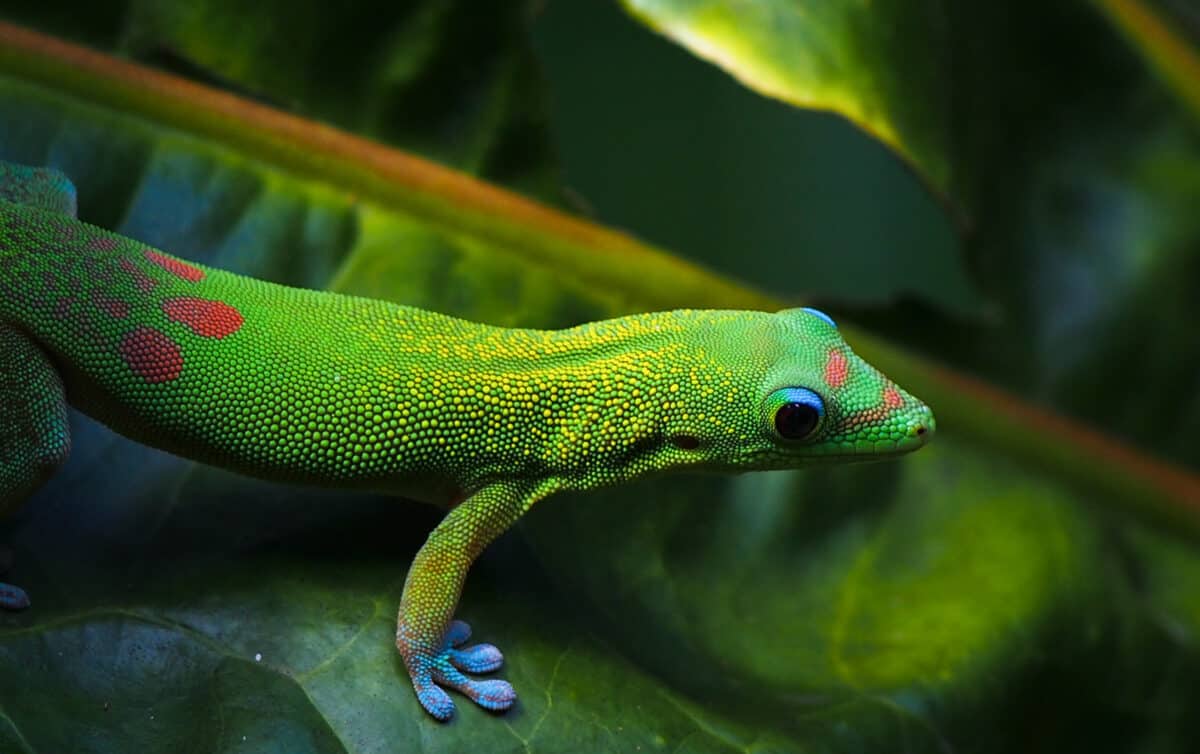
The Gold Dust Day Gecko, with its brilliant emerald green body speckled with gold flecks and a crimson stripe running from nostril to eye, adds a tropical splash of color to Hawaii’s landscape. Though not native to Hawaii, these charming lizards were introduced in the 1970s from Madagascar and have since become established throughout the islands. Growing to about 4-5 inches in length, these diurnal geckos are most active during daylight hours, unlike many of their nocturnal relatives.
Highly adaptable, Gold Dust Day Geckos can be found in gardens, parks, and around buildings, particularly where flowering plants attract the insects and nectar they feed on. They’re especially common around tourist areas, where they’ve become beloved characters often seen doing push-ups on leaves or scampering across walls. Their toe pads are covered with microscopic.
Conclusion:

Hawaii is home to a remarkable array of wildlife found nowhere else on Earth. Its remote location, volcanic landscapes, and lush rainforests have given rise to species that are as unique as they are beautiful—from the brightly colored Hawaiian honeycreepers flitting through the treetops to the giant green sea turtles basking on sandy beaches. Each island offers a different window into nature, whether it’s spotting spinner dolphins off the coast or witnessing the majestic flight of the nēnē, Hawaii’s state bird. These animals aren’t just fascinating to observe—they represent the ecological richness and cultural heritage of the islands.
However, many of these species face growing threats from habitat loss, invasive species, and climate change. Conservation efforts across Hawaii are working to protect these irreplaceable creatures and the environments they depend on. By supporting sustainable tourism, respecting wildlife spaces, and learning about the native species that make Hawaii so special, visitors and residents alike can help ensure these incredible animals continue to thrive for generations to come. Hawaii’s wildlife is more than just a visual spectacle—it’s a living treasure worth preserving.
- 13 Most Aggressive Mammals in the Wild - August 24, 2025
- 10 Behaviors That Keep Eagles Healthy And 3 That Shorten Lifespan - August 24, 2025
- 13 Wildest Animal Migration Journeys - August 24, 2025

